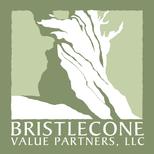 Author: Bristlecone Value Partners
Author: Bristlecone Value Partners
Covestor model: Large Cap Value
Disclosures: Long BAC, WFC, JPM
While the broad stock market produced flattish returns during the second quarter, there was at least a whiff of fear in the air (a June gloom, as we might call it in Los Angeles) as the market dropped from the highs hit in April and May, before rebounding somewhat to end the quarter roughly flat.
The causes for investor concern are not new. In fact, they more than vaguely resemble those that caused the market to tumble in last year’s second quarter: a stalled economic recovery, the looming domestic fiscal crises facing federal and local governments, and the sovereign debt crisis in Europe. Last Spring, the world was aghast at the oil pouring into the Gulf of Mexico from BP’s blown well. This Spring saw the devastating Tohoku earthquake and tsunami that struck and paralyzed Japan. This is less a case of been there, done that – and no case at all for complacency. Rather it’s a reminder that the economic recovery following the financial crisis has been notably weak and fragile. That the stock market recovered strongly in the last two-plus years is a reflection both of how low stock valuations became during the crisis, and also the fact that corporate America (thanks to aggressive cost-cutting, growing exports, and global exposure) is humming along in much better shape than the punch-drunk US consumer.
Bristlecone’s Large Cap Value portfolio was up 0.97% for the three month period 4-6/11, while the benchmark S&P 500 was down 0.39%.
Everyone hates the banks, from Hollywood (this year’s Oscar for best documentary went to Inside Job, which focused on the role of the banks in the financial crisis) to the President, to Congress (the Dodd-Frank bill), to small businesses (who can’t get loans), to foreclosed-upon former homeowners. Bank-hating has become a foundational element of the post-Great Recession zeitgeist.
So, naturally, as contrarians, we found ourselves sitting around our conference table last month for our regular research meeting, shaking our heads in wonder at the depths of disfavor that banking stocks find themselves in once again, asking whether we should be adding to our positions in the banks.
As of 7/26, we own stock in three of the largest US banks: Bank of America (NYSE: BAC), Wells Fargo (NYSE: WFC), and JP Morgan (NYSE: JPM). All three took bailout money from the Federal government (some less willingly than others) and will forever bear a stigma for it. But all three have long since repaid that money and raised any capital required by the Federal Reserve’s stress tests. Although losses from home loans continue to pile up, all three banks appear well reserved against future losses and hold more capital than they have in quite some time.
One reason people resent banks is because they are enormously profitable – the larger ones especially. From an investor’s standpoint, that’s a good thing. Indeed, in aggregate the banks are more than halfway back to what we would call a normalized level of earnings. Wells Fargo and JP Morgan have even increased dividend payouts and resumed share repurchases, a sign that they (and the Federal Reserve) believe they hold more capital than necessary.
In the next year or two, barring a second recession or a much further drop in home prices, bank earnings may well approach normalized levels for the first time since 2007. But you wouldn’t know the banks are better off now than they were a year ago, based on their stock prices.
In the end, we decided to increase our investment in Bank of America, the cheapest and most troubled of the bunch. One attractive investment attribute of banks is that their businesses are mostly obsolescence-proof. Banking will exist 50 or 100 years from now. Individual banks will be broken up or re-named, but the core constituent businesses will be just as necessary 25 years from now as they were 25 years ago.
After what happened over the last decade, we suppose it is no surprise that banks are so poorly regarded as businesses, but we suspect that such extreme disregard may yet form the roots of an attractive long-term investment opportunity.
Other than adding to Bank of America, we made three other trades during the quarter. First, we sold our remaining position in Home Depot. Second, we trimmed our position in Covidien as it approached our estimate of its intrinsic value. Covidien (NYSE: COV), which sells medical devices and drugs, was the crown jewel of the original Tyco conglomerate, but it didn’t perform so well coming out of the recession.
Finally, we increased our position in Dell Inc. (NASDAQ: DELL). Dell is one of several “old” technology companies that are trading at very low multiples of current earnings (Cisco and Intel are two other portfolio holdings which also fit this description). Sales and earnings at Dell are on the rise due to fast growth in emerging markets and a broader product offering, especially in services. We believe Michael Dell has done a good job executing a turnaround since resuming his executive role at the company in early 2007. The combination of a growing business, high free cash flows, and a very low valuation is not a guarantee of investment success, but it’s a pretty good starting point.

